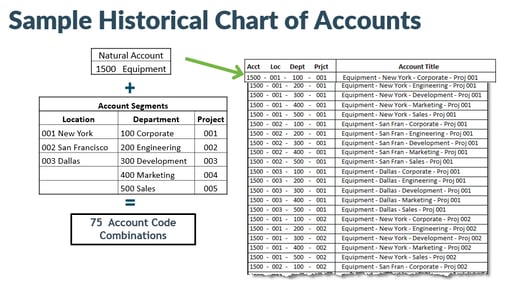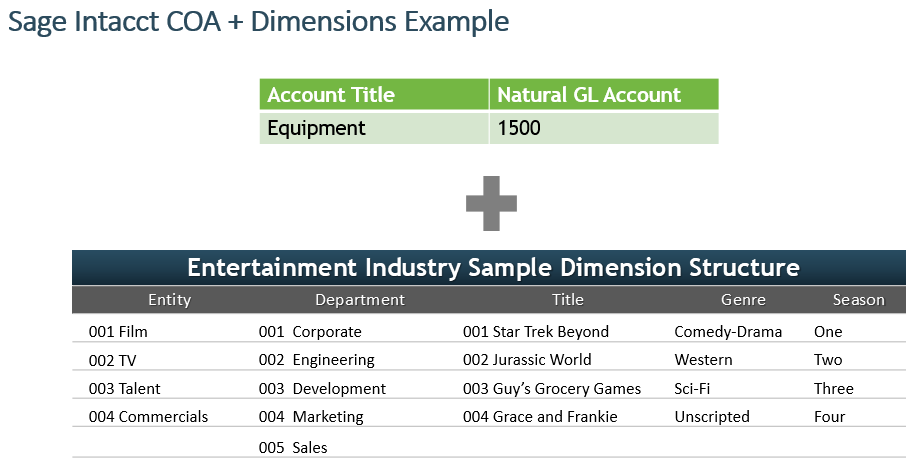Building an A-List Accounting Team
Welcome to RKL’s blog series designed to help growing entertainment companies recognize and overcome some of the most common challenges in corporate accounting and finance. This entry is the first of three designed to help you understand core building blocks of Sage Intacct that facilitate greater reporting and analysis.
- Building block #1: Data dimensions
- Building block #2: Multi-entity accounting
- Building block #3: Account groups
Challenge
Growing entertainment companies face many challenges, but one of the most significant is limited visibility into financial performance. This is true for the entire company or for a variety of segments, including: individual entities, departments, divisions, projects, territories, etc.
Most often with legacy applications, these organizations are limited based on their chart of accounts structure. Or, in the case of an entry-level solution like QuickBooks, the chart of accounts + the class dimension determines what is reportable. In either case, it’s an unwieldly and inflexible mechanism for providing true insight.
In response, most growing entertainment companies decide on a combination of three strategies:
- Build out the chart of accounts (COA) with several segments in order to create more reports within the accounting solution. This can help in a way, but also means that the COA quickly becomes bloated and a nightmare to manage. Plus, it’s never enough and still lacks the flexibility to mix, match, sort, filter, etc. to provide required reports.
- Keep the COA somewhat simple, routinely dump data to Excel, and create the reports from there. This approach provides lots of flexibility, but is agonizingly inefficient and prone to human error.
- Mix and mash the first two strategies based on the question being asked. This is most often the scenario when we begin speaking with a prospective client. They’ve tried one or both approaches and are frustrated with the results, overwhelmed with busy work that prevents them from being strategic, and desperate for a solution.

Solution
Sage Intacct is a dimensional accounting system that enables you to significantly simplify your COA and boost reporting flexibility. Data dimensions are tagged to transaction line items throughout all of the modules and become the basis for nearly unlimited flexibility in reporting. Standard data dimensions include entity, vendor, customer, employee, department, class, item. Then clients can add projects (e.g., film, TV show, festival, etc.) and even user-defined dimensions as necessary (e.g., distribution channel, territory, etc.) for even more insight.
The screenshot below is just one example of what’s possible with dimensions:
Success Story: Legendary Entertainment converted from Sage 300 to Sage Intacct and leveraged dimensions to dramatically improve reporting and reduce their COA by about 70%.

Benefits
- Create a dimension and it’s automatically available for any transaction—general ledger, receivables, payables, time, revenue management, fixed assets, and more.
- “Tag” transactions as well as operational data with dimension values. Tagging with dimensions, instead of assigning transactions to hard coded individual accounts, enables you to easily add business context to your data or “tell the story” of your transactions.
- Improve reporting insight, making it easier for you to get fast answers to your business questions.
- Gain quick access to the insights that speed decision-making and help drive growth.
- View performance from any dimension you need. Use drop-down lists to filter, group and organize your data by dimensions. For example, you can go from a standard income statement to profitability by project or revenue by geography with a few clicks of the mouse.
- Add dimensions, as your business changes, to easily track and report on what’s most important.
Conclusion
If you’re weary from an unwieldly COA and aggravated with relying upon Excel to manually create reports and perform analysis, you’re going to love dimensions. Contact RKL today to learn more!




